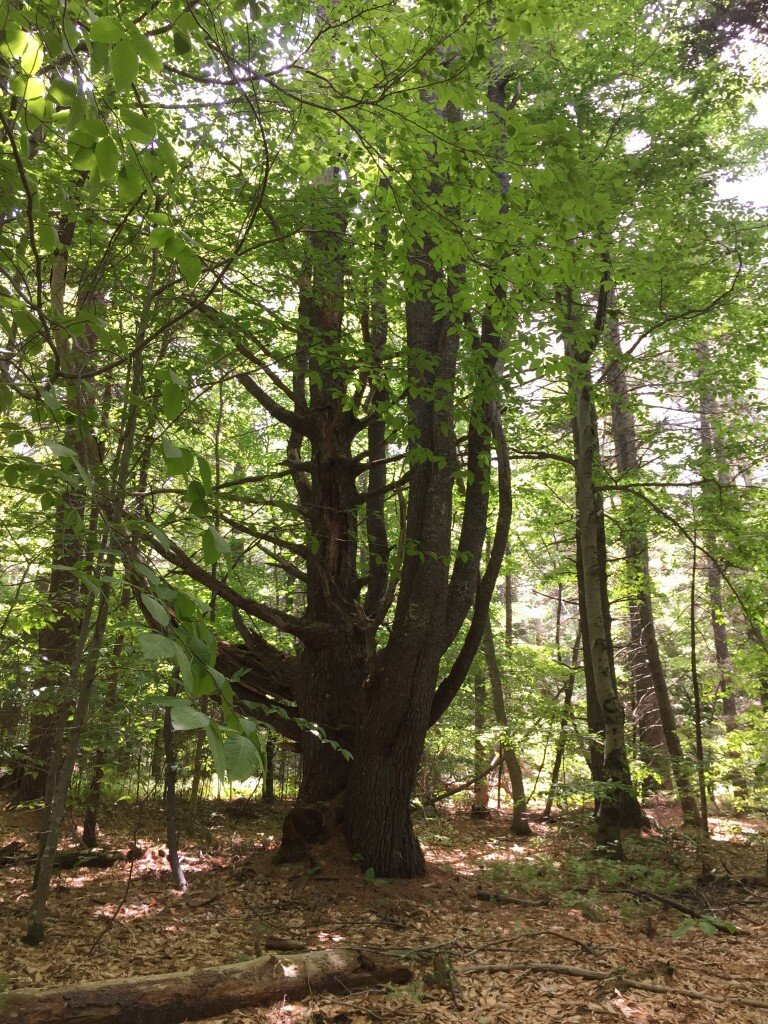Do you have any “wolf pines” on your land?
Wolf Pine on the Moir family easement. Photo by Lynne Flaccus
A wolf pine is a large multi-trunked pine with spreading branches. You can often find them along old stone walls in the woods, or around the edges of fields. They look pretty gnarly and aren’t usually considered “valuable” from a timber perspective. But from a wildlife perspective though they can be a bonanza! The many branches provide for nest sites, rotten patches that woodpeckers can use for nesting or foraging for insects, cavities for squirrels and owls, and a bounty of seeds.
Trees that grow close together in the forest tend to grow tall and straight as they race for the sunlight in the canopy competing for space and light. When trees grow in the open the branches spread and reach in all directions to take advantage of the open sun. When some young pines grow in the open they are targeted by pine weevils that can kill the terminal twig, leaving the other twigs in the whorl to race for the “lead.” The result is many branches that grow to turn to trunks and take up more space in the forest.
Finding a wolf pine or wolf tree is a clue to past history of the land. And what does the “wolf ” part refer to? A “lone wolf,” or in this case a “lone tree,” standing by itself in the forest!
Photo: Rick Allmendinger
This eagle that took up residence at the north end of the big lake in 2015 was a thrilling sight for lake visitors. Our resident loons may have disagreed, but abundant sources of other prey allowed raptor and water divers to coexist. Bald eagles have made a strong rebound across the country, and loon numbers are on an upward trajectory as well. Threats still exist in the form of habitat loss and exposure to environmental toxins. Protected lands and healthy waterways such as those found in Chocorua are key to the continuing success of avian wildlife.



